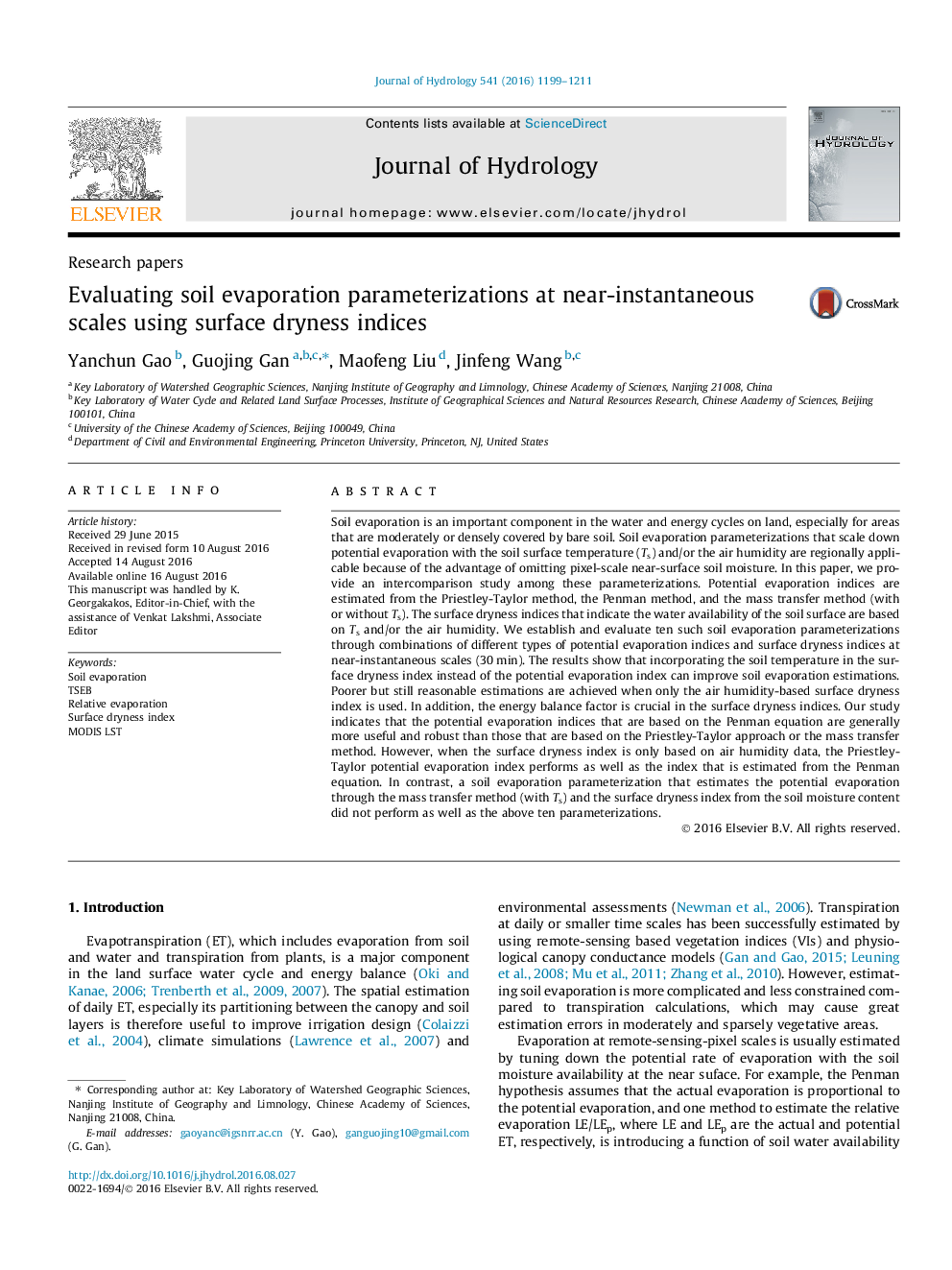| کد مقاله | کد نشریه | سال انتشار | مقاله انگلیسی | نسخه تمام متن |
|---|---|---|---|---|
| 6409467 | 1332870 | 2016 | 13 صفحه PDF | دانلود رایگان |

- 11 soil evaporation parameterizations were evaluated.
- Incorporating Ts in the surface dryness index improved evaporation estimation.
- Evaporation estimation is reasonable with the air humidity used as model constraint.
- Energy balance factor is crucial in the surface dryness indexes.
- The Penman potential evaporation index is the most useful and robust.
Soil evaporation is an important component in the water and energy cycles on land, especially for areas that are moderately or densely covered by bare soil. Soil evaporation parameterizations that scale down potential evaporation with the soil surface temperature (Ts) and/or the air humidity are regionally applicable because of the advantage of omitting pixel-scale near-surface soil moisture. In this paper, we provide an intercomparison study among these parameterizations. Potential evaporation indices are estimated from the Priestley-Taylor method, the Penman method, and the mass transfer method (with or without Ts). The surface dryness indices that indicate the water availability of the soil surface are based on Ts and/or the air humidity. We establish and evaluate ten such soil evaporation parameterizations through combinations of different types of potential evaporation indices and surface dryness indices at near-instantaneous scales (30Â min). The results show that incorporating the soil temperature in the surface dryness index instead of the potential evaporation index can improve soil evaporation estimations. Poorer but still reasonable estimations are achieved when only the air humidity-based surface dryness index is used. In addition, the energy balance factor is crucial in the surface dryness indices. Our study indicates that the potential evaporation indices that are based on the Penman equation are generally more useful and robust than those that are based on the Priestley-Taylor approach or the mass transfer method. However, when the surface dryness index is only based on air humidity data, the Priestley-Taylor potential evaporation index performs as well as the index that is estimated from the Penman equation. In contrast, a soil evaporation parameterization that estimates the potential evaporation through the mass transfer method (with Ts) and the surface dryness index from the soil moisture content did not perform as well as the above ten parameterizations.
Journal: Journal of Hydrology - Volume 541, Part B, October 2016, Pages 1199-1211